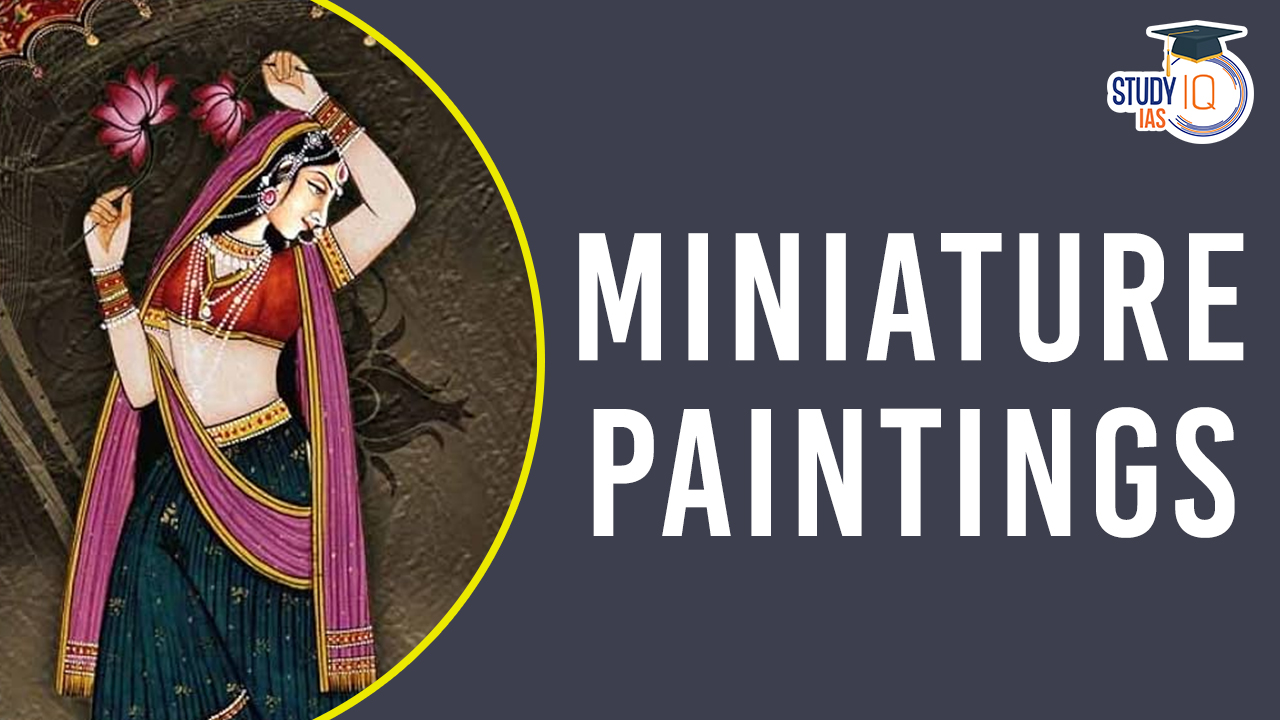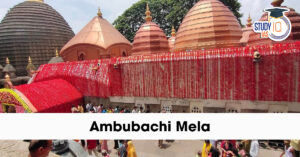Table of Contents
Miniature paintings, characterized by intricate brushwork and vibrant colors sourced from natural elements, are small-scale handmade artworks. In India, these paintings often depict themes such as Ragas, religious, and mythological stories. Primarily crafted for books or albums, they find roots in the Palas of Bengal and flourished during the Mughal era. The tradition continued through various Rajasthani schools like Kishangarh, Bundi, Jaipur, Mewar, and Marwar, adding richness to this unique artistic heritage.
We’re now on WhatsApp. Click to Join
Miniature Paintings in India
Miniature paintings in India are intricate, small-scale artworks celebrated for their meticulous brushwork and vibrant hues derived from natural sources like vegetables and precious stones. Common themes include Ragas, musical note patterns, along with religious and mythological narratives. Originating with the Palas of Bengal, these exquisite creations reached their zenith during the Mughal era.
Various Rajasthani schools, including Kishangarh, Bundi, Jaipur, Mewar, and Marwar, further advanced this tradition. Typically designed for books or albums, Indian miniature paintings showcase a unique fusion of artistry, cultural themes, and historical influences, creating a rich tapestry of visual storytelling and artistic expression.
History of Miniature Paintings
- Miniature paintings originated in India around 750 A.D. during the rule of the Palas in the eastern part of the country.
- Initially, these paintings depicted Buddhist teachings and images written on palm leaves due to space constraints.
- Around 960 A.D., similar miniature paintings emerged in the western parts under the Chalukya Dynasty, focusing on religious themes.
- The Mughal Empire significantly influenced the growth of Indian miniature paintings, blending Persian and Mughal styles.
- Akbar’s appreciation for art played a key role in the development of the Mughal style of painting.
- European influences further shaped Mughal miniature paintings.
- Despite the decline of the Mughal Empire, Rajput rulers in Rajasthan continued to patronize miniature paintings.
- Rajasthan’s miniature paintings, while influenced by the Mughal style, had distinctive features, often depicting royal lifestyles and mythological stories.
- Themes included tales of bravery, contributions of rulers, and narratives showcasing the lives of kings and queens.
Schools of Miniature Paintings
Originating with the Pala style, India witnessed the emergence of diverse schools of miniature paintings over centuries. Shaped by the varying social, religious, economic, and political contexts across regions, these schools exhibited distinctive characteristics. While mutual influences were evident, each school maintained its unique features, contributing to the rich tapestry of Indian miniature art.
Pala School
- Originating in the 8th century A.D., the Pala School of miniature paintings focused on the symbolic use of colours.
- Themes were often derived from Buddhist tantric rituals, and images of Buddha and deities adorned palm leaves.
- Displayed in Buddhist monasteries like Nalanda and Vikramasila, these paintings influenced Southeast Asia, reaching places like Sri Lanka, Nepal, Burma, and Tibet.
Orissa School
- Despite the prevalence of paper, the Orissa School stuck to palm leaves for miniature paintings in the 17th century.
- Artworks predominantly featured love stories of Radha and Krishna, scenes from ‘Krishna Leela,’ and ‘Gita Govinda.’
- Bold, expressive strokes and vibrant colours depicted the majestic landscapes of eastern India.
Jain School
- Emerging in the 11th century A.D., the Jain School portrayed religious texts like ‘Kalpa Sutra’ as miniature paintings.
- Initially on palm leaves, the school transitioned to paper in the late 12th century.
- Unique features included enlarged eyes, square-shaped hands, vibrant colors, and heavy ornamentation of depicted goddesses.
Mughal School
- The fusion of Indian and Persian styles gave rise to the Mughal School, flourishing under Akbar’s reign.
- Scenes from the royal court, hunting expeditions, and battles were common subjects.
- Realistic portrayals of plants, richly decorated frames, and diverse themes marked the Mughal miniature paintings.
Rajasthani School
- The decline of Mughal miniature paintings led to the rise of the Rajasthani School, with distinct styles across regions.
- Various schools, including Mewar, Marwar, Hadoti, Dhundar, Kangra, and Kullu, portrayed royal lifestyles and social changes.
- Bold and contrasting colors, extracted from natural sources, characterized Rajasthani paintings.
Pahari School
- Originating in the 17th century, the Pahari School emerged in North India, influenced by Mughal and Rajasthani styles.
- Schools like Guler, Basohli, Garhwal, Chamba, and Kangra had distinct features but commonly depicted gods, goddesses, and the scenic beauty of the Himalayas.
Deccan School
- Flourishing in places like Ahmednagar, Golconda, and Bijapur, the Deccan School drew from the traditions of the Deccan and beliefs of Turkey, Persia, and Iran.
- Differing from Mughal counterparts, it featured intense colors, sensuous female figures, symmetrical arrangements, and geometrically accurate depictions of buildings.
- Bright colors like red and orange characterized the Deccan School’s unique style.
Miniature Paintings UPSC
Indian miniature paintings, originating around 750 A.D., evolved through diverse schools like Pala, Orissa, Jain, Mughal, Rajasthani, Pahari, and Deccan. Characterized by intricate brushwork and vibrant colors, they depict themes ranging from religious and mythological stories to royal lifestyles. The Pala School, rooted in the 8th century, emphasized symbolic use of colors, influencing South-East Asia. Mughal paintings, flourishing under Akbar, blended Indian and Persian styles. The decline of Mughal art led to the rise of the Rajasthani School, showcasing bold colors and distinct regional styles. Pahari School depicted gods and Himalayan landscapes, while the Deccan School featured intense colors and geometric accuracy.


 Bonalu Festival 2025: Date, History, Rit...
Bonalu Festival 2025: Date, History, Rit...
 Puri Jagannath Rath Yatra 2025, History,...
Puri Jagannath Rath Yatra 2025, History,...
 Ambubachi Mela 2025: Dates, Rituals, Sig...
Ambubachi Mela 2025: Dates, Rituals, Sig...





















